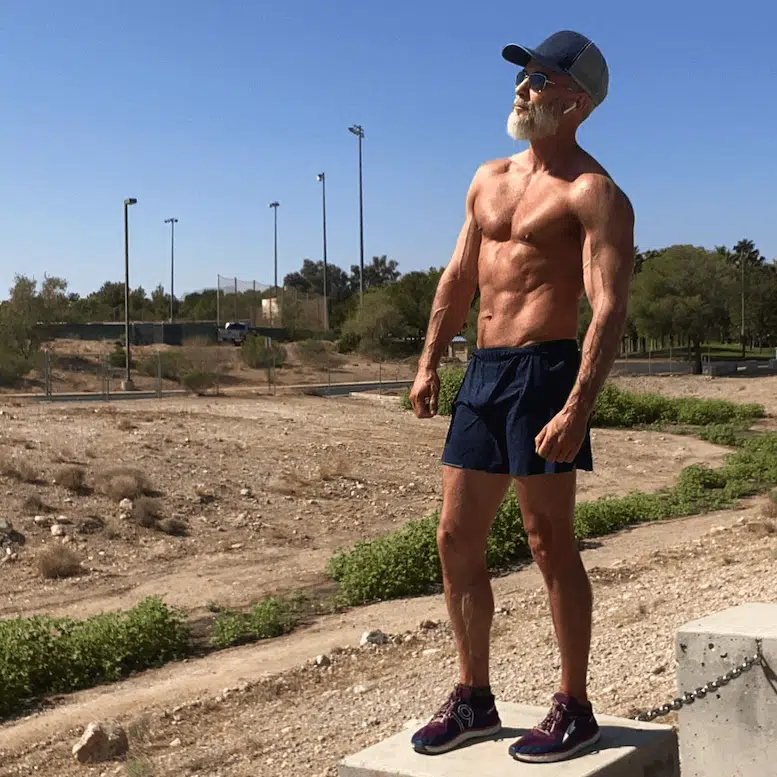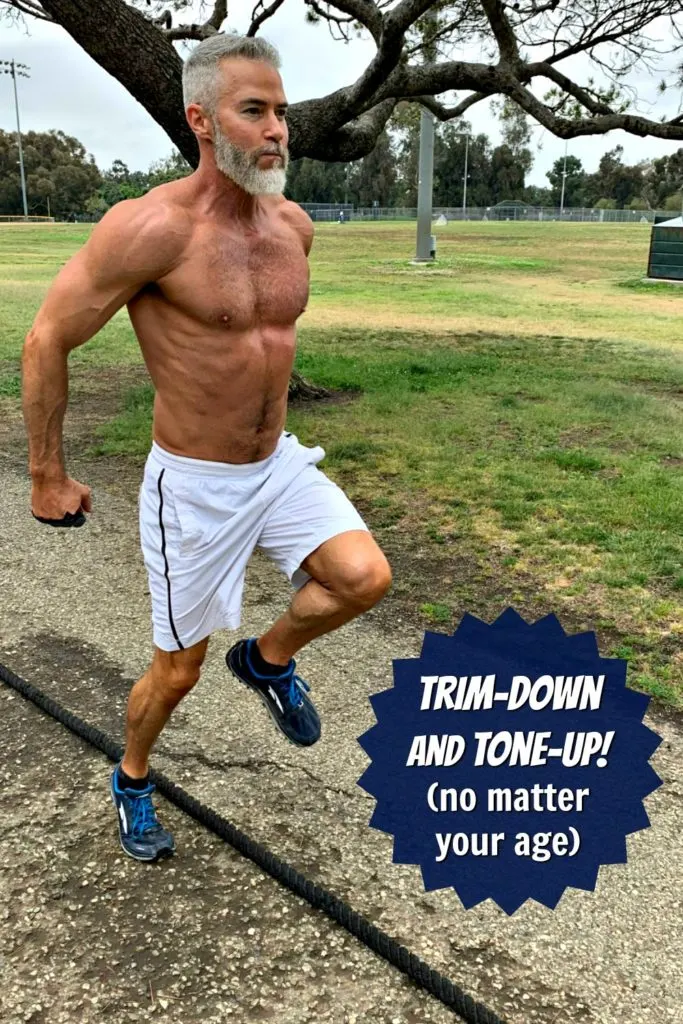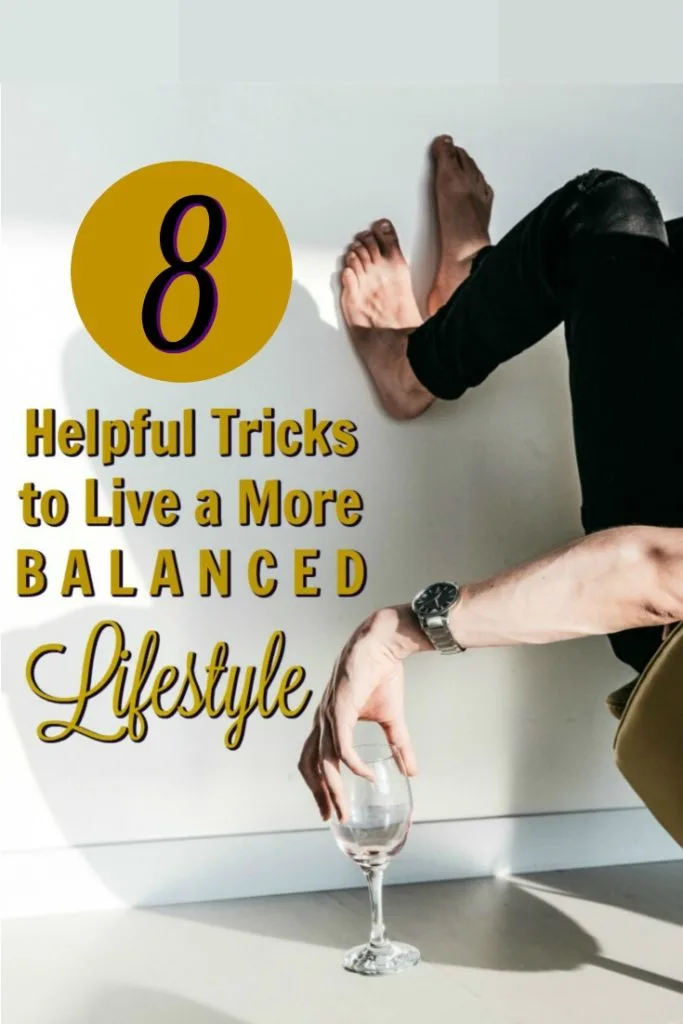You can experience more feelings of accomplishment by having a balanced work-life. All it takes are minor adjustments to your habits, improved scheduling, and a desire to balance work-life with play.
One positive aspect of creating a balanced work-life after age 50 is that it teaches you to use your time more efficiently.
And as you become more productive in midlife and post-midlife, you begin to learn new things about yourself – and you experience more feelings of fulfillment.
What is a Balanced Work Life and How Do You Get One?
Many mature adults are living unbalanced lives today.
Fortunately, you can get balanced again.
Life usually feels best and flows most smoothly when you find the right mix of passionate interests and necessary responsibilities. As per experts, an ideal split is 30% work, 20% family, 10% friends, 10% health, 10% personal growth, 10% recreation, and 10% spirituality.
Your career can sometimes feel like all-or-nothing. Studies show that 60% of employees report working more than 50 hours a week, leading to burnout.
The 40s and 50s within one’s lifespan are considered the prime earning years:
- You’ve acquired enough experience, wisdom, and momentum in your career to achieve higher recognition and income before you slow it down in your 60s.
- You believe that you must bring your A-game to your work to become increasingly successful.
- But, it’s tempting to mistakingly think that “A-game” means a 60-hour workweek – and being physically tired and emotionally drained much of the time.

You can get so busy taking care of other people and attending to the details of their lives that you sometimes forget to balance the fundamental aspects of your own life. The 80/20 rule is helpful here – spend 80% of time on high-priority responsibilities and 20% on lesser tasks.
In particular, you need a more balanced work-life.
Here are eight methods for creating a balanced work-life after age 50.
1. Say “Yes” to Healthy Boundaries
You think that taking care of others is generous – but you forget that among the most generous things anyone can do is to model for others what good self-care looks like.
Having a balanced work-life means saying “no” a lot because you must become fiercely protective of your time and physical energy.
Saying “no” isn’t selfish.
In fact, creating a balanced work-life is one of the most spiritual and generous things you can do.
When you engage in solutions for realizing your full potential – and become prosperous and physically robust as a result – it unconsciously gives other people permission to do the same. It’s inspiring.
2. A Balanced Work-Life Allows You to Experience Each of Life’s Seasons Fully
“Anti-aging” sometimes has a desperate, fear-based sound – as if all aging is terrible and must be halted.
Healthy aging is more nuanced.
Just as when your eyesight becomes blurry, and you get glasses to see better, healthier aging is a means to slow (or remove) the more unnecessary adverse events that can occur as you mature.

Healthy aging after 50 also includes celebrating and emphasizing the more positive aspects of getting older. For example, improved emotional intelligence, life experience, and wisdom.
After all, improved emotional maturity is meant to be a natural part of life experience.
Each human life has its seasons (I mean, you couldn’t pay me to be 23 again).
Healthy aging is the art of learning to create a balanced work-life – a journey into increased authenticity and purpose.
3. Understand that Stress and Aging Are Identical
But healthy aging is more than just an art; it’s a science.
Scientific research is growing rapidly, proving new ways to have a balanced work-life – which, in turn, can lengthen your life expectancy and improve your appearance and daily quality of life.
I interviewed two highly regarded medical doctors – healthy-aging specialists Dr. Edison de Mello and Dr. Myles Spar – so they could share the latest science behind having a balanced work-life after age 50. They report:
- Some people under 50 are getting a jump on their healthy aging protocols and living the longevity lifestyle before their peers do.
- The longevity lifestyle is a system of living that optimizes your thinking, feeling, and habits so that you can live the longest, happiest life possible.
- The essential idea is that well-being is true wealth and that when you have optimal wellness, anything is possible – your present and future are wide open. In fact, the more physical energy and clear-mindedness you possess, the better you will do at work.

Action Step: Today, I invite you to take 3 minutes to breathe consciously:
- notice how you feel in this moment; rate that feeling on a scale of 1-to-10
- sit in a quiet place
- close your eyes
- inhale slowly for a count of 4, expanding your diaphragm (lower lungs)
- hold for a count of 4
- exhale slowly for a count of 4 – squeeze that last drop of air out of your lower lungs
- hold for a count of 4
- repeat for next 3 minutes
- after 3 minutes, open your eyes; notice again how you feel, rate from 1-to-10
- compare your pre-breathing number with your post-breathing number.
Each of us has a different answer to the question, “what is success?”
But no matter how your answer sounds specifically, it probably includes a phrase such as “being happy” or “have inner peace.”
Inner peace is that sweet stillness and abiding calm that each of us has at our soul’s center. Accessing that relaxed sense of satisfied stillness is easier when our lives aren’t weighted too heavily in one particular area.
4. Get Grounded in Your Desire for a Balanced Work-Life
There are realizations that many people have as they gradually experiment with living a more balanced work-life. I believe these realizations reveal how to achieve excellence.

Being mindful of these dynamics as they occur during your journey of self-improvement will make the process more meaningful and – frankly – also help you to achieve your goals more quickly after age 50.
“…what you celebrate and focus upon, you get more of”
The journey often begins as you become irritated with your habits and feel a sneaking awareness that you’re not realizing your fullest potential.
There’s some inner voice – conscious or otherwise – that whispers, “I know I can do better.”
5. Know that Doing Better Means Changing
As irritation moves to frustration, there tends to be a bit of negative self-talk: “Come on, now, stop slackin’ off! Get your act together!”
You know our life has gotten cluttered, and you know you’d like to streamline.
But even the word “clutter” can fill you with a bit of dread.
You immediately think of what you should be doing if only you were “better” – like cleaning the boxes out of the garage, or sorting through that pile of receipts on your desk, or crafting that report for your boss.
You begin sensing, on some level, that specific habits need fine-tuning for you to have a more balanced work-life.
“…by recognizing when you arrive at milestones, you’ll achieve your goals even more quickly”
6. Become Aware that Some Thoughts Create More Anxiety than is Necessary
Surprise, surprise – guilt and shame are not sustainable motivators. Therefore, nothing changes, or the changes that you do make don’t stick.
The fact is that goal-setting and organizing are optional. You don’t have to do it, and you’re still a good person if you don’t.
The ability and willingness to re-frame challenges as something positive is key.
One recent and significant aspect that science has contributed to the understanding of the balanced work-life concerns the overall impact of relentless low-level stress:
In the short video above, the doctors reveal how stress and aging are really the same things, and they share ideas about how to negotiate with stress to live more effectively and have a more balanced work-life.
The big secret here is to move toward becoming solution-oriented.
Yes, you need to identify problems, but only briefly. Your mindset should always be toward identifying solutions.
Choose to believe that for every problem, there is a solution, and the challenge is to find it. Research shows that solution-focused thinking reduces anxiety by over 20% compared to problem-focused thinking.
7. Choose to Metabolize Daily Anxieties in Healthier Ways
At this point in the journey, you encounter a psychological fork in the road: “Being hard on myself isn’t working that great, so… what if I turned it into a game?”

This is a big moment (a choice, really), and from here, you can embark in a new direction with a positive attitude and a light heart – with a sense of humor, play, and discovery.
Many in our modern era manage their anxiety by repressing and self-medicating (sugar, beer, television – whatever the “drug” of choice is; anything can be used addictively). In fact, a Gallup survey found that poor work-life balance was a top reason for the Great Resignation trend.
On the other hand, organizing is a healthy way to move forward into change. It’s an excellent self-soothing technique over 50.

8. Recognize When You’re Beginning to Achieve A More Balanced Work-Life
The way that life often operates is that what you celebrate and focus on, you get more of – including your accomplishments.
As you move into a higher state of productivity and excellence, you must recognize and celebrate your successes – large or small.
Celebration is an integral part of a balanced work-life.
Your stress will decrease, your level of contentment will rise by over 30%, and you will prevent accelerated aging within your body, according to multiple studies.
The formula for a perfectly balanced work-life is different according to the unique needs of each person’s life purpose, but it’s safe to say that a full circle of wellness will at least include:
- quality connection with other human beings outside of work (this doesn’t happen on its own, you have to tend to your relationships consistently);
- a job in which your sincerest intention is to demonstrate consistent excellence (it’s vital that you always work on improving your relationship with money);
- a hobby that you love;
- goals (you need to have a dream that you’re in the process of achieving);
- and self-care and health protocols (delight in the miracle of your own physical body and enjoy discovering what helps it operate optimally).

Key Takeaways and Next Steps
In summary, here are some key takeaways. An epiphany is a sudden moment of increased awareness or insight:
- What insights did you gain about achieving better work-life balance?
- What next steps will you take to implement these strategies?

Resistance Band Workout for Upper Body • Over Fifty and Fit
Thursday 13th of June 2019
[…] don’t hold your breath during shoulder presses and keep your facial expression […]
The Pilates Chair Workout • Over Fifty and Fit
Monday 6th of May 2019
[…] during some of the balancing poses when you stand upon the chair, you’ll want to consider moving the pilates chair near a […]
Benefits of Removing Sugar and Grains from Your Daily Diet
Sunday 7th of April 2019
[…] hormones like cortisol pumping through your system. Try to construct your life so that you can feel peaceful, positive, and […]
Mat Exercise Program for Strength and Flexibility – A No-Gym Workout
Sunday 17th of March 2019
[…] the way, you might be tempted to hold your breath on this one, so do remember to […]
Supple VS Sour: Avoiding the Mental and Physical Rigidity of Getting Older
Saturday 4th of August 2018
[…] that has an impact on our psyches and stress levels – even if the impact operates outside our day-to-day awareness while getting […]